What is the difference between additive manufacturing and a 3D printing service? Learn the pros and cons of traditional methods vs. digital fabrication to experience the best outcomes. Discover tips to prepare for rapid prototyping and other steps in this informative blog.
Modern manufacturing can include a 3D printing service bolstered by rapid prototyping and CNC machining. Sometimes called additive manufacturing, 3D Printing allows engineers to innovate complex designs and develop groundbreaking products ahead of the competitive curve. It is also a more sustainable approach to product development and functional testing.
Many confuse 3D printing and additive manufacturing, but they are not identical processes. Traditional manufacturing methods don’t always involve advanced technology, collaborative robotics, or automation. Yet, digital fabrication methods are still limited and unsuitable for some projects. Understanding the differences is, therefore, crucial.
“This blog examines the distinctions between 3D printing and additive manufacturing to help you make an informed decision.”
Understanding the nuances between 3D printing services and additive manufacturing ensures the best outcomes. We will discuss the benefits and drawbacks of each choice and explore the factors for choosing an approach. Then, we’ll explore suitable projects and tips for picking processes. Let’s get to it.
Table of Contents
Additive Manufacturing VS 3D Printing
Understanding 3D Printing Service
Step One: Development, Design, and Dissemination
Step Four: Printing and Post-Processing
3D Printing Service Advantages and Limitations
Quality Control Concerns in 3D Printing
Understanding Traditional Manufacturing
Factors to Consider When Choosing Between 3D Printing and Traditional Manufacturing
Best Projects for 3D Printing Service
Seeking Professional 3D Printing Advice
Tips for Making the Final Decision
Additive Manufacturing VS 3D Printing
Some use the terms additive manufacturing and 3D Printing interchangeably. However, there is a distinct difference between the two methods. For example, additive manufacturing (AM) is an umbrella term to describe the various technologies and processes used for product creation. It involves fabricating items by adding materials one layer at a time.

We offer fast, high-quality, tailored PROTOTYPING solutions for leading companies in a wide range of industries.
superior Rapid PROTOTYPING
Meanwhile, 3D printing service is a type of AM. With binder jetting, material extrusion, and powder bed fusion, additive manufacturing encompasses multiple methodologies. The 3D printing subset uses computer-aided engineering to create three-dimensional objects from digital files. It is one of the most commonly used AM processes outside traditional manufacturing.
Understanding 3D Printing Service
Advanced manufacturing facilities offering a 3D printing service will likely use computer-aided design (CAD) software to create objects using a digital mockup. In 3D Printing, engineers use materials such as thermoplastics or photopolymer resins to build structures layer by layer. The required 3D printing filament depends on project parameters.
Imagine a traditional printer that prints images on a two-dimensional plane by drawing lines across the paper. It follows a set of instructions programmed on a computer to develop unique images or text based on different criteria. A 3D printing service is similar, except it prints three-dimensional objects.
This bottom-up manufacturing technique is one of many additive manufacturing processes. It allows teams to produce or enhance complex shapes and geometries that are otherwise difficult or impossible to create. The standard 3D printing service often looks like this:
Step One: Development, Design, and Dissemination
The first step in 3D printing services involves engineers and product developers collaborating on different concepts. Many teams utilize rapid prototyping for fast and efficient design iteration before the next steps.
Processing begins with the creation of a three-dimensional model using CAD. Some teams also scan existing objects into the system using a 3D scanner.
Step Two: Slicing and Pricing
The second step in the 3D printing service consists of slicing three-dimensional models into thin cross-sectional layers. Engineers use sophisticated software to develop these digital blueprint guides on each detail.
Slicing helps groups determine the appropriate materials for 3D printing projects. This essential phase teaches teams about design consistency, quality, manufacturability, and cost.
Step Three: Material Matters
In the third step, engineers choose the materials that best suit their product’s design and distribution plans. They must consider various other factors also, including:
- Strength
- Flexibility
- Appearance
- Environmental impact
- Complexity
Additive manufacturing with 3D Printing sometimes means limiting the materials you can use. Many facilities can process plastics, metals, ceramics, biological materials, and food. Talk to an AM expert for more information.
Step Four: Printing and Post-Processing
Manufacturing teams can begin building objects after the rapid prototyping and design iteration steps. The printing processes vary depending on the required technology, materials, and timeline. However, fused deposition modelling (FDM) is the most common 3D printing service.
The post-processing steps follow with support structure removal, cleaning, sanding, and finishing. This phase is crucial because it aligns the final product’s appearance with the distributable standards.
3D Printing Service Advantages and Limitations
Manufacturers choose 3D printing services for multiple reasons. The technology is flexible and fast, offering quick turnovers and shorter lead times with less waste. Teams that use rapid prototyping with lean additive manufacturing techniques see tremendous benefits despite the applicable limitations.
Engineers prefer 3D Printing for customized designs. They can make unique objects and then reiterate them consistently. Many 3D printing services are more cost-effective because of the on-demand manufacturing capabilities and one-off production variables. Teams can tailor designs to individual needs or personalize aspects to suit evolving standards.
AM techniques like 3D Printing also reduce assembly requirements and time. Digital fabrication produces objects with intricate geometries and minimal errors, lowering expenditures. Manufacturers can choose advanced materials to help improve fidelity and ensure top quality for highly regulated industries.
Conversely, limited production speeds and size restrictions might concern some. Traditional manufacturing methods are often faster than digital fabrication techniques. Building objects layer by layer takes time, and the speeds can depend on several factors, such as:
- Rapid prototyping results
- Object dimensions
- Design complexity
- Preferred materials
- Printing technologies
- Surface finish
- Industry standards
Most 3D printing service providers will demonstrate equipment and software constraints. Ask about maximum sizes allowances for different projects. Then discuss the materials to determine surface finishing parameters and other post-processing requirements.
Quality Control Concerns in 3D Printing
Despite the limitations, 3D printing services provide significant advantages for design flexibility, rapid prototyping, and quantifiable production. However, some teams might stumble during quality control. Ensuring consistency means closely monitoring multiple properties, so speak to an AM expert to develop a comprehensive plan.
The capabilities of 3D Printing, rapid prototyping, and additive manufacturing technologies are already expanding. As technology advances, facilities could utilize more sophisticated CAD software and programming for faster design iteration and improved stability.
Understanding Traditional Manufacturing
Traditional manufacturing methods can provide unique benefits unavailable with digital fabrication, 3D Printing, and AM. These established techniques produce high-quality goods at scale using subtractive processes. Engineers remove material from workpieces to create desired shapes using various textiles not always accessible with 3D printing services.
Manufacturing with traditional methods means higher production volumes and material diversity. However, conventional techniques can also mean longer lead times and higher costs for prototyping. Considering the options is critical to achieving your goals. Let’s look at a few of the available methods next.
Injection Molding
Use this method when producing plastic parts in high volumes. Experts will inject molten materials into a mold cavity, cool it until it solidifies, and process the final form.
CNC Machining
Choose computer numerical control when projects require lathes, mills, or drills. Operators will remove material from workpieces to produce high-precision metal or plastic components.
Casting
Use casting when producing complex shapes such as engine parts, jewelry, and sculptures. Experts can cast molten metals using identical molds for optimal consistency.
Extrusion
This traditional manufacturing process is suitable for creating a continuous profile with specific cross-sectional dimensions. Engineers force metal or plastic through a die when producing pipes, tubs, and sheets for various assemblies.
Joining
Select joining techniques like welding, brazing, and soldering. These methods best combine separate parts into a unified whole without decreasing product functionality.
Forming
Forming processes, such as bending, stamping, and forging, create different objects by applying force, heat, or pressure. Talk to your team about the pros and cons of each material.
Traditional manufacturing approaches must align with multi-level production goals and sustainable fabrication standards. Discuss the benefits and limitations of conventional methods vs. advanced techniques such as additive manufacturing and 3D Printing.
Factors to Consider When Choosing Between 3D Printing and Traditional Manufacturing
Choosing between a 3D printing service and traditional manufacturing techniques can be tricky. However, understanding the differences between 3D printing and additive manufacturing helps you decide. Here are six more factors to consider when picking a plan:
#1. Project Purpose
Your project aims to develop usable parts and products for different purposes. Are you creating a prototype or an end-use object? Do you need small-scale production or large-scale manufacturing?
#2. Time Constraints
Production times matter when operating in competitive markets. Have your team compare deadlines to traditional manufacturing outcomes and 3D printing methodologies.
#3. Material Options
Consider various materials and their impact on your project, design, and environment. Discuss the suitability of each option to ensure it will work for the desired application.
#4. Cost Considerations
How much of an upfront investment are you willing to make? Calculate the per-unit costs, including rapid prototyping, manufacturing, and post-processing.
#5. Design Complexity
Complex designs might require different processes, rare materials, or extra time. Talk about the impact of customized features to determine which approach works best.
#6. Scalability
Is your project scalable for future iterations or modifications? Let that information influence your decision.
Best Projects for 3D Printing Service
This section will explore real-world examples of projects better suited for additive manufacturing than traditional fabrication. The versatility of a standard 3D printing service makes it ideal for several applications, including these:
- Prototyping
- Customization
- Architecture
- Healthcare
- Education
- Automotive
- Aerospace
3D Printing enables engineers to create highly personalized products, scale models, and custom devices for industrial or commercial use. Think of phone cases, figurines, prosthetics, surgical gear, equipment for EdTech integration, art installations, replacement parts, and innovative components.
Additive manufacturing combined with digital fabrication means visualizing designs and efficiently communicating concepts. It also means leveraging 3D printing services to develop complex objects with little waste, offering new potential for creative expression and industrial innovation.
Other suitable projects for a 3D printer include replacing hard-to-find parts or re-creating obsolete components. Some teams use additive manufacturing technology to develop advanced robotics and drones with custom frames and castings. The lightweight properties of many 3D-printed products also translate well into the fashion and home décor spaces.
Seeking Professional 3D Printing Advice
Consulting 3D printing service experts is essential because the technology continually evolves, and the possible applications expand. However, that can make finding and engaging with traditional manufacturers and additive manufacturing companies more challenging. It helps to evaluate potential carefully and ask relevant questions.
FAQs
How do you ensure that a manufacturer can meet specific fabrication requirements and provide high-quality, highly accurate results? Here are three questions to ask:
- What 3D printing service do you offer, and which materials are available?
Understand the range of technologies and materials at your disposal. Check out the different approaches, including FDM, SLS, and SLA. Then compare resolution and compatibility.
- Can I see past project examples from your portfolio?
Review the 3D printing service provider’s previous projects to ensure their quality, consistency, and relevance. Check that they can handle similar orders to assess capabilities.
- What is the average turnaround time and pricing structure for a 3D printing service?
Turnaround time is critical in traditional and additive manufacturing. Plan projects and calculate budgets with a price breakdown, including material costs, machinery, post-processing, and shipping.
Use this information to help assess the feasibility of projects. Then decide on additional questions according to your goals.
Tips for Making the Final Decision
Beyond the formal inquiries, it might help to consider other factors, such as:
- Customer support
- Quality control measures
- Design assistance services
- File optimization
Weigh the pros and cons based on specifics and requirements. Explore different approaches, experiment with new technologies, and use iterative design to your advantage.
Conclusion
Additive manufacturing (AM) and 3D printing service are related but not identical. AM is an umbrella term describing fast fabrication techniques that include 3D Printing. However, 3D printed products utilize advanced technology like computer-aided design (CAD), robotics, and automation to build structures one layer at a time. The approach is often more cost-effective and efficient than traditional manufacturing methods.
Make an informed decision based on the tips provided. Determine how to integrate digital fabrication and additive manufacturing by combining a 3D printing service with traditional techniques. Then consult an expert to develop a comprehensive plan.
 About the Author
About the Author
James Murphy is the founder and CEO of HLH Rapid – a hybrid CNC machine shop fusing Western service and quality with Eurasian industry influences for over 14 years. His advanced enterprise uncovers cost-effective rapid injection molding techniques to remain unmatched by industry competitors. Murphy’s full-service fabrication and manufacturing methods span six dedicated zones, from 3D printing and vacuum casting to sheet metal prototyping and project management. His expertise also includes high-efficiency machining within strict yet volatile markets.
Murphy earned an MBA after becoming inspired by his father’s hands-on craftsmanship. As a budding entrepreneur, he taught English and studied Chinese to pursue pioneering objectives. His groundbreaking approach helps build the future by providing well-rounded manufacturing services to innovative Western businesses. When he’s not offering upscale RP and CNC, James enjoys art-house movies, Thai boxing, and spending time with his growing family.
Visit HLHRapid.com for an instant quote on rapid prototyping services.


